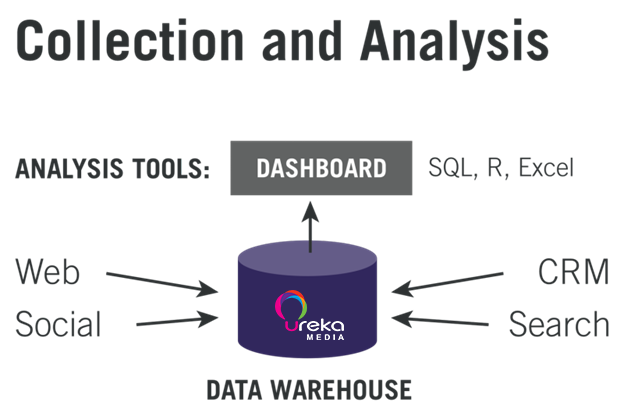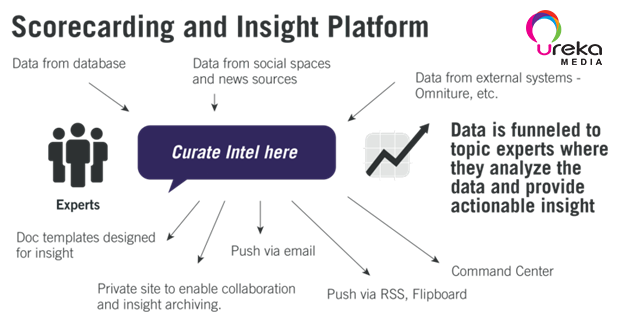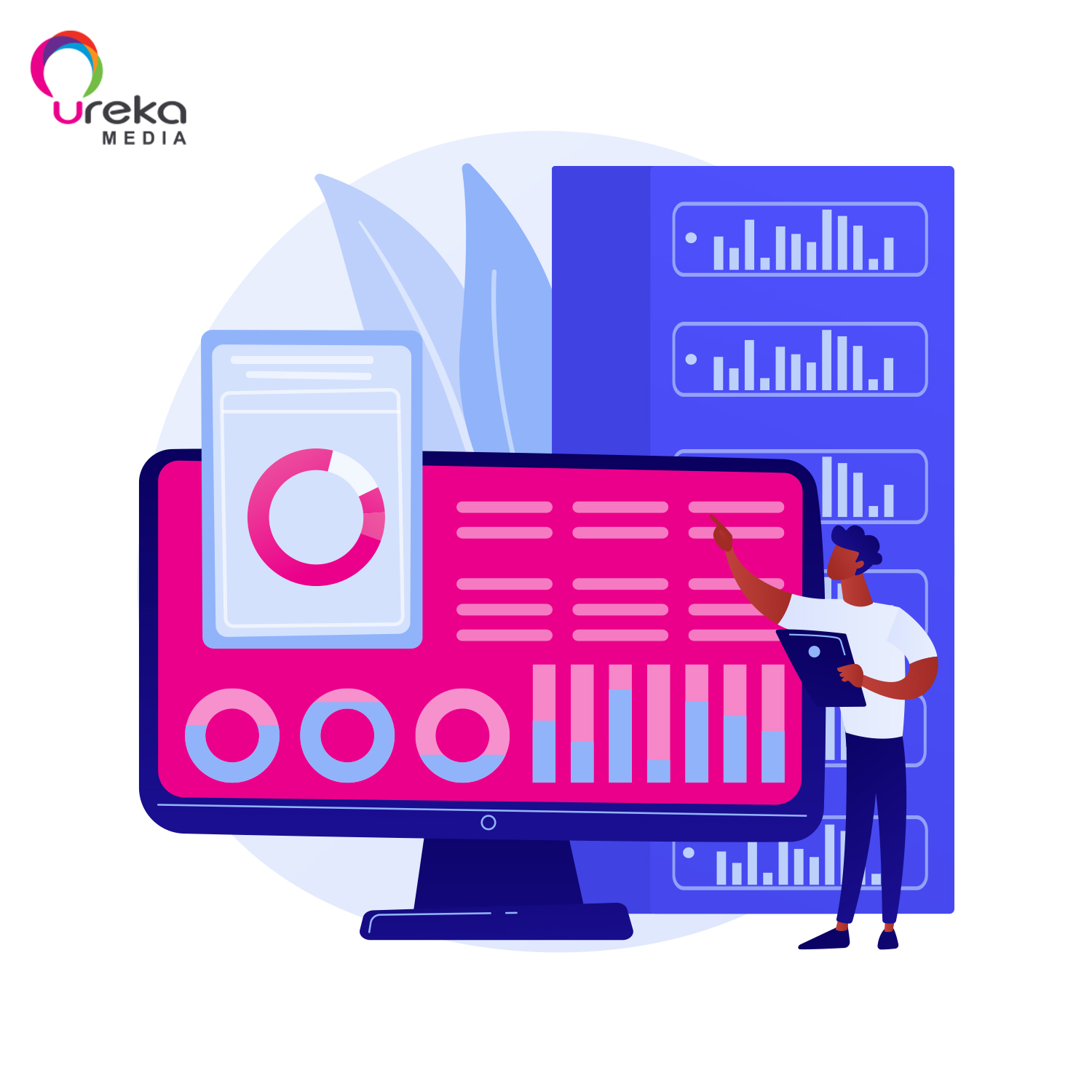


Make people SEE and REMEMBER the brand



Get people to UNDERSTAND and
WANT the brand



Change people's BEHAVIOR and
get them to CONVERT



Take care of people to CONVERT OFTEN and
ADVOCATE the brand
U News
[Data Driven Marketing] Three Ways To Be A Data-Driven Thought Leader
So you've got a ton of data -- now turn it into actionable insights that drive business!

Four years ago, I saw something that changed my professional trajectory.
My team built a marketing dashboard for a Fortune 50 company. The platform integrated 13 data sources into a data warehouse while supporting 26 different languages and thousands of users.
One night, I decided to look at the usage logs, and I almost had a heart attack.
This company paid us more than $1 million to create a marketing dashboard nobody used.
After additional research, I realized that this is a systemic problem (I dare you to look at the usage logs of your marketing dashboard).
This experience motivated me to start my current company, Right Intel, a software business that provides clients with the tools necessary to deliver insights and thought leadership both internally and to clients.
It also inspired me to find other ways to help marketing departments actually use data, not just collect it. In this column, I will share three ways you can turn raw data into thought leadership.
Every morning, the President of the United States receives a document called the “Presidential Daily Brief.” It’s the most classified document in the United States.
It’s generally a 1- or 2-page memo that lists the major threats the U.S. faces (fun document to wake up to every morning). The Office of the Director of National Intelligence coordinates the daily brief in partnership with the CIA.
The daily brief provides strategic warnings and tactical insights to the president and his staff, curating the most important intel the country’s intelligence community uncovers.
The president isn’t given a user name and password to a dashboard; he isn’t expected to check out the data and come to his own conclusions — or determine what intel is worth worrying about.
He’s given a document in a format that’s easily digestible and clearly spells out why he should care about the content.
Now, I know your company doesn’t have the same resources as the President, but you can still turn data into actionable insights.
You see, a chart or an article without explanation as to why it matters is just data. People don’t need more data — they need thoughts on what the data means, why it matters and what they should do with it. They need analysis.
That’s how business decisions should be made.
Generally, the people closest to the data can provide the best insight. If that person is you, don’t be afraid to share your thoughts.
2. Get It Into Their Hands
Don’t get me wrong — I think dashboards are useful. They’re great tools for analysts. They help teams slice and dice the data.
Companies need them.

But dashboards aren’t good at getting insights into the hands of the people that should be acting on them. Unfortunately, people don’t log into dashboards; I learned the hard way that if you build it, they will not come.
Instead of relying on dashboards, analysts need to push insight out to where people are already.
If your co-workers are in SharePoint, then send insights there. If your co-workers like emails, send them emails formatted so the important points are easy to read. If they’re difficult to reach, push insights to monitors throughout the office. Push it to coworkers’ RSS feeds, even.
The point is to make your insights portable, easy to consume, and accessible through more than one channel.
If your insight is worth writing, then it should at least be read.

3. Don’t Wait!
A group of analysts from a large retailer recently shared their insight plan with me.
The plan sounded great. It was a logical progression that started with data collection, moved onto dashboard creation and then finally delivered insight.
The team is going to wait until the point of sale (POS) system is connected to the customer database, where the data will be enhanced with demographic data purchased from Experian. The plan is to couple this data with marketing campaign info to give the retailer’s marketing departments a 360-degree view of both customers and marketing campaigns.
Here’s the problem: projects like this take a long time to complete and, to be honest, are never completely done. There are always more data sources to integrate, more ways to use the data, etc. Worse, according to Gartner, around 80 percent of data warehouse projects fail.
If you’re a marketer waiting to deliver insight because of a task IT needs to complete, you’re in trouble. You may be waiting for a long time. Don’t be that person.
You must find a way to deliver insights immediately, using the data you have available. If you wait until everything is perfect for delivery, you’ll never deliver insights to your team — and you’ll miss out on impacting your business.
Just last week, I met with a really smart insights team. They were in the middle of implementing a huge marketing command center in which they plan to bring together social data with other marketing performance data.
This room will have 10 or 15 monitors and be staffed by a team of analysts. While the room isn’t ready, the technology is far from being complete and the analysts haven’t been hired, the core team of four leaders is anxious to deliver insights today…. right now…. immediately. I love this mentality!
They know the technology will get better and make their lives easier eventually. But they also know that if they don’t start showing value right away, their project will lose momentum inside of an organization that demands results.
Source: Marketingland
Recent Post
![[Performance Marketing] 3 Steps Use Display Advertising Success for B2B](https://urekamedia.com.my/uploads/data/uploaded/images/photo_news/800x800/news_20170222013734/UrekaMedia_PerformanceMarketing_Programmatic_DisplayAds_for_B2B_thumbnail.jpg)

![[PERFORMANCE BASED ADS] ARTIFICIAL INTELLIGENCE LIMITATIONS AND IMPLEMENTATION](https://urekamedia.com.my/uploads/uploads_image/20180422/20180422075903_11405.jpg)








